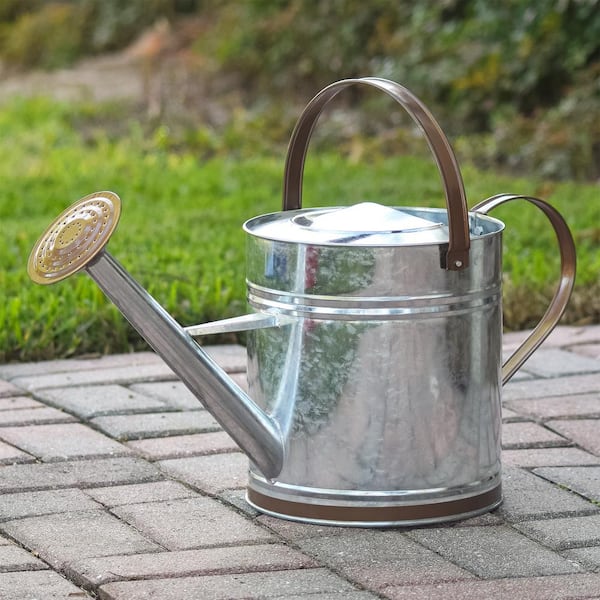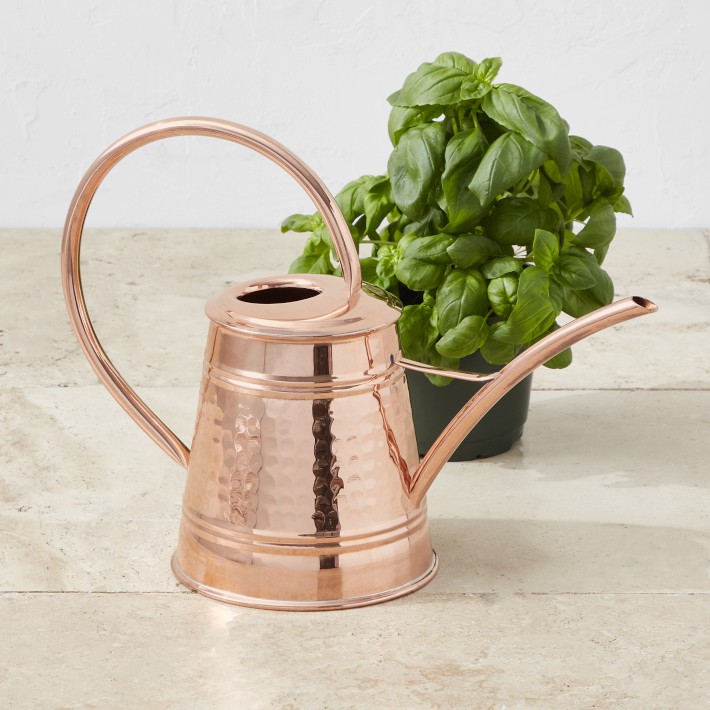
Mastering Plant Hydration with the Watering Can
The Importance of Proper Plant Hydration
Proper plant hydration is critical for their survival and growth. Just as humans need water to thrive, plants require adequate moisture to maintain their physiological processes. Without enough water, plants can suffer from stress, leading to wilting, stunted growth, and even death. The role of a watering can in this process is not just to supply water but to do so in a way that matches the plant’s needs.
The soil around a plant acts like a reservoir, storing water for the roots to absorb. A can with a gentle pour helps to mimic natural rainfall, encouraging the roots to grow deeper and stronger. Over-watering can be just as harmful as under-watering. It can cause root rot, a dangerous condition that suffocates the roots and prevents them from absorbing nutrients. Using the right can helps gardeners avoid this by controlling the amount and rate of water applied.
Additionally, proper hydration supports photosynthesis, the process by which plants convert light into energy. With insufficient water, photosynthesis slows down, affecting the plant’s ability to produce energy for growth. Different plants have diverse water requirements, making the choice of cans even more pertinent.
Consistent moisture levels help to prevent plant diseases and pests. Overly dry conditions can attract pests like spider mites, while overly moist environments can foster fungal infections. A careful balance, maintained by the regular and attentive use of a can, will help create a healthy environment for plants to flourish in.
In summary, the importance of proper plant hydration cannot be overstated. It is a fundamental aspect of gardening that ensures plants remain healthy, resilient, and beautiful. The can, as a tool, plays a pivotal role in achieving this hydration balance, making it an indispensable item for both novice and expert gardeners alike.
Choosing the Right Watering Can for Your Plants
Choosing the right watering can is key to plant health. Different plants need different watering methods. The can must fit the needs of your plants, soil, and climate. Consider the can size and spout type. A long spout distributes water evenly. It avoids water waste and leaf wetness that can cause disease. Factor in the can’s weight when full. Heavy cans are hard to carry and can strain your arms. Look at the can’s handle too. Make sure it is comfortable to grip and hold.
For seedlings, a small can with a gentle sprinkle is best. It waters them without washing away soil or seeds. For large plants or outdoor gardens, go for a larger can. It should have a rose or breaker attachment. This attachment controls water flow and simulates gentle rain. Potted plants do well with a medium-sized can. It allows precise watering without spillover.
Always match the watering can to your garden’s size and type. It makes the task of watering efficient and effective. It also saves time and protects your plants from harm. The best can will help your plants thrive and grow vibrant and strong.
Types of Watering Cans and Their Uses
There are various types of watering cans. Each type meets different gardening requirements. A common metal can is durable and suitable for outdoor gardens. Plastic cans are lightweight and often cheaper. These work well for indoor plants and patios. Cans with removable roses are versatile. They are perfect for gentle watering of seedlings and established plants alike.
For small indoor plants, a narrow spout can is best. It delivers a precise stream to avoid overwatering. Large rubber or plastic cans suit big outdoor areas. Their capacity reduces the need to refill often. For hanging plants, opt for a can with a long and angled spout. This design makes reaching difficult spots easier.
Balcony gardeners tend to prefer small, stylish cans. They often come in unique designs that complement home decor. High-end stainless steel cans resist rust and last longer. They are a choice for the serious gardener. Collapsible cans save space and are good for occasional use.
The choice of a watering can should depend on the garden’s specific needs. Consider the can’s material, capacity, and spout design when making your choice. The right can makes watering efficient and helps keep plants healthy. With the correct use of these cans, your garden will display its vibrant best.
Best Practices for Watering Your Plants
Watering your plants correctly is as crucial as choosing the right watering can. Here are some best practices to keep your plants perfectly hydrated:
- Water in the morning or evening. This prevents quick evaporation and gives plants time to absorb moisture.
- Check the soil before watering. If the top inch is dry, it’s time to water.
- Use lukewarm water. Cold water can shock plant roots, especially in colder climates.
- Water slowly and deeply. This encourages roots to grow downward, seeking moisture.
- Avoid wetting the foliage. Wet leaves can lead to fungal diseases and pests.
- Adapt to weather and seasons. Plants need less water in cool, rainy periods and more in hot, dry spells.
- Be mindful of each plant’s needs. Some prefer dry conditions, while others thrive with more moisture.
Following these simple steps ensures that your plants get the right amount of water without harm. You’ll promote healthy growth and avoid common problems like over or under-watering.
Watering Can Features to Consider
When choosing a watering can, certain features can make a big difference. Here are some to keep in mind:
- Material. Metal or plastic? Consider durability and weight.
- Capacity. How much water do you need? Pick a size easy to carry when full.
- Design. Look for handles and spouts that make watering comfortable.
- Spout Length and Shape. Long spouts reach under leaves; angled spouts help with high places.
- Nozzle Type. Removable roses offer a gentle shower for delicate plants.
- Comfort and Balance. A well-designed can feels good to hold, even after long use.
These features help ensure you water with ease and precision. They protect your plants from stress or damage. Keep them in mind to find a can that suits both your garden and your comfort.
Maintaining Your Watering Can for Longevity
Taking care of your watering can is crucial for its longevity. Like any gardening tool, regular maintenance helps keep it in good condition and makes watering more effective. Here are key steps to help prolong the life of your can:
- Rinse thoroughly after each use. Residual water can leave mineral deposits that may corrode metal cans.
- Store it upside down. This allows all the water to drain out, preventing rust or mildew buildup.
- Keep it clean. Wipe it down to remove dirt and debris that can cause scratches or rust on metal cans.
- Inspect for leaks. Small holes can be patched, but larger damage may mean it’s time for a new can.
- Avoid dropping your can. This can dent or crack it, affecting its balance and ability to pour smoothly.
By following these simple tips, you ensure that your watering can remains functional for many watering seasons. Your plants will continue to benefit from the care you put into maintaining this essential gardening tool.
Watering Can Innovations and Eco-Friendly Options
The world of gardening is evolving with innovative watering cans. Gardeners now have options that are not only functional but also kind to the environment. Eco-friendly watering cans support sustainable gardening practices. Here are some exciting innovations in watering cans:
- Recycled Materials: Many watering cans now come made from recycled plastics or metals.
- Collapsible Designs: Save space and use less material with a collapsible watering can.
- Solar-Powered: Some cans feature small solar panels to power sensors for precise watering.
- Self-Watering: Newer cans can release water slowly over time. They mimic natural processes.
- Water Measuring: Advanced cans have measuring marks to prevent over-watering.
Eco-friendly options focus on reducing waste and conserving water. Gardeners can choose cans that use minimal resources. A simple choice like a watering can has a big impact. It affects both plant health and our environment.
Some tips for eco-friendly watering include:
- Harvesting Rainwater: Use rain barrels to collect water for your garden.
- Mulching: Mulch retains moisture in the soil, reducing the need to water often.
- Right Timing: Water early or late to avoid evaporation and save water.
By choosing innovative and eco-friendly watering cans, gardeners take a step towards a more sustainable world. They help preserve resources while keeping gardens thriving. With the right can, you water wisely and care for the earth too.
Tips for Efficient Watering Techniques
Efficient watering techniques save time and support plant health. Here are tips to water your plants well:
- Create a schedule. Track when you water each plant to avoid both over and under-watering.
- Measure water use. A can with measurement marks helps give just the right amount of water.
- Soil type matters. Sandy soils drain fast and need more water; clay holds moisture longer.
- Group similar plants. Place those with the same watering needs together to simplify your routine.
- Use a timer. Automate watering with a timer to avoid the risk of forgetting.
- Invest in quality tools. A durable can with the right features is worth the cost.
- Check weather forecasts. Adjust watering based on upcoming rain or dry spells.
Maximize every drop by following these methods. Your plants will thrive with just the right touch of water.


